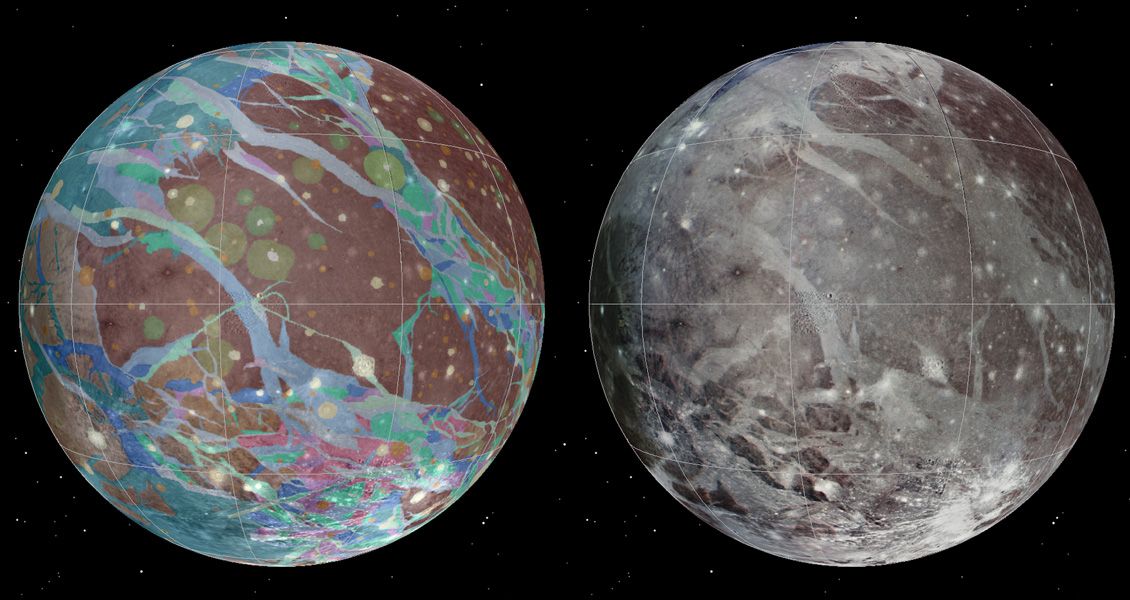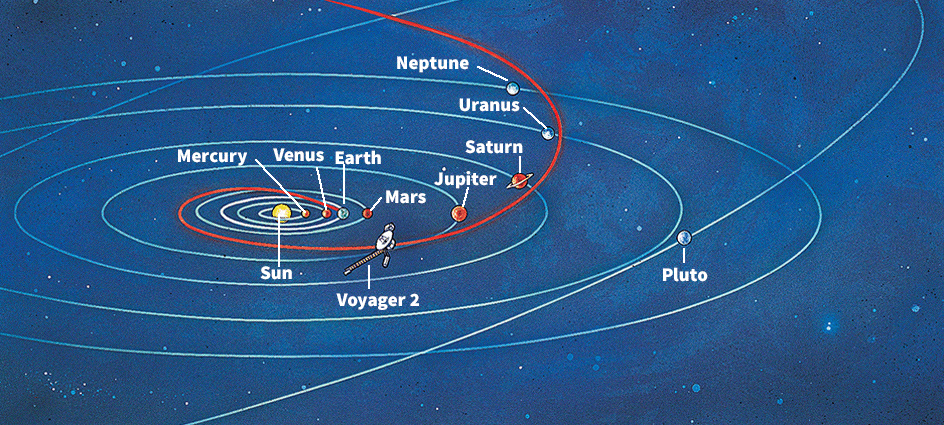Jupiter’s Moon Ganymede Mapped in Glorious Color
Friday, February 14th, 2014February 14, 2014
The wildly complicated surface of Ganymede, the largest moon in the solar system, appears in colorful detail in a new map published by the United States Geological Survey. The map is based on images taken by NASA’s Voyager 1 and Voyager 2 spacecraft, which flew by Jupiter and its moons in 1979, and the Galileo probe, which orbited Jupiter from 1995 to 2003. The map is the first global geologic map of Ganymede, Jupiter’s seventh moon, or any other icy moon, for that matter.
Ganymede, also Jupiter’s largest moon, is bigger than the planet Mercury and almost as large as Mars. Ganymede is one of four Jovian moons discovered by the Italian scientist Galileo Galilei in 1610. From observations using Earth-based telescopes and orbiting spacecraft, scientists have long known that Ganymede’s icy surface is made up of almost equal amounts of dark and light material. A thin ocean of salty water may lay about 105 miles (170 kilometers) below the surface. The presence of water makes Ganymede and the other large moons of Jupiter—along with Mars—prime candidates in the search for extraterrestrial life.

The false colors in a new map of Ganymede reveal geologic features created during different times in the moon's history. (USGS Astrogeology Science Center/Wheaton/NASA/JPL-Caltech)
The new false-color map, which was created by a team of scientists headed by Geoffrey Collins of Wheaton College in Massachusetts, provides the first solid evidence for three major geological periods in the moon’s history. During the oldest period, represented in brown, asteroids and comets bombarded the surface, leaving many impact craters. Forces released by the biggest impacts also created large cracks in the moon’s crust. Lighter colors on the map represent two somewhat younger periods. During one of these, changes in the temperature of the moon caused the surface to expand and crack. The new terrain (land) created by these tectonic forces was marked with parallel sets of ridges and valleys. During the third period, geologic activity declined. As the crust settled, new ridges and valleys appeared.
Additional articles in World Book:
- Callisto
- Europa
- Io
- Satellite (Satellites of the gas giants)
- Probing the Planets (a Special Report)
- The Thirty-Year Journey of Voyagers 1 & 2 (a Special Report)




